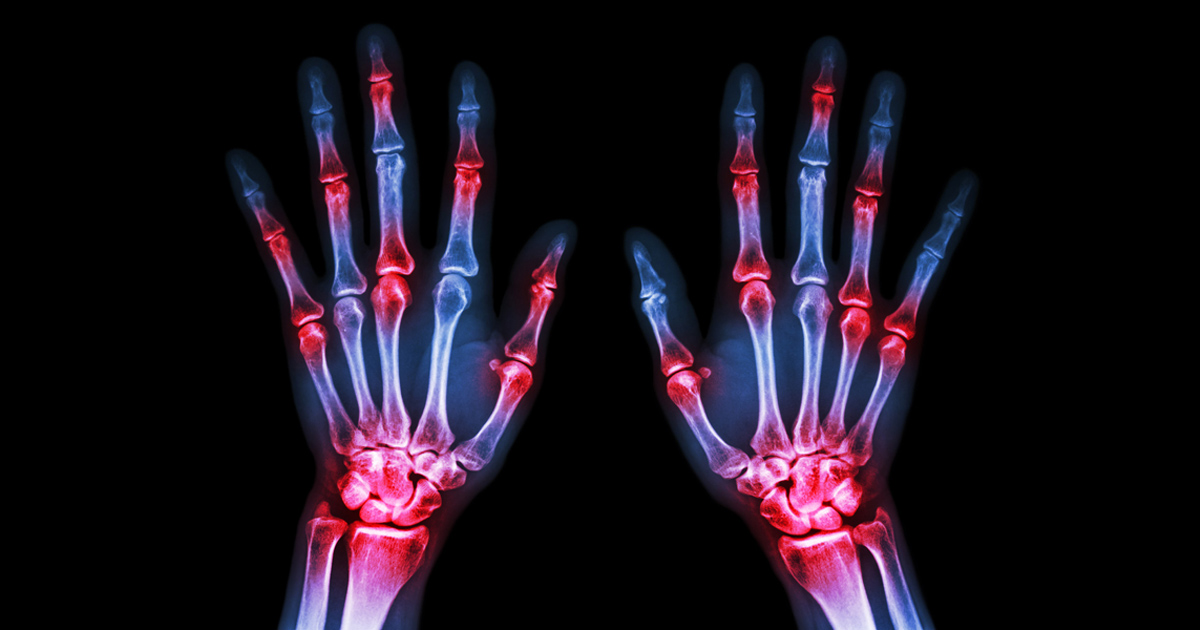Tender joints linked to higher disease activity scores, lower inflammation in RA
Patients with rheumatoid arthritis with predominantly tender joints demonstrate higher composite disease activity scores, or CDAS, but lower levels of ultrasound-detected inflammation, according to data published in Arthritis Care & Research.
“CDAS are thought to be proxies for the degree of inflammation and are recommended as measures of disease activity in treat-to-target strategies,” Hilde Berner Hammer, MD, PhD, of Diakonhjemmet Hospital, in Oslo, Norway, and colleagues wrote. “However, acknowledging the multifactorial cause of joint tenderness, there is a need for deeper understanding of tender joints as a measure of inflammation. A comprehensive [ultrasound] assessment may be considered the examination that most closely reflects the actual inflammatory activity.”
To evaluate the associations between tender-swollen joint count difference and a variety of outcome measures, including ultrasound scores, among patients with RA during followup on biologic disease-modifying antirheumatic drug treatment, Hammer and colleagues conducted a longitudinal, observational study of 209 patients in Norway. The participants, all of whom had an established diagnosis of RA, were recruited consecutively when beginning biologic DMARD treatment, and followed with clinical, laboratory and comprehensive ultrasound examinations at 0, 1, 2, 3, 6 and 12 months.

Patients were grouped into two cohorts, with 84 in the predominantly tender joints group — tender-swollen joint count difference greater than 0; and 125 in the predominantly swollen joints group — tender-swollen joint count difference less than or equal to 0 joints. The researchers performed statistical analyses using Pearson's correlation, independent samples Ttest and regression analyses. A total of 152 participants completed the 12-month follow-up.
According to the researchers, tender joint count was highly correlated only with patient-reported outcomes (P < .001). Composite disease activity scores and patient-reported outcomes were significantly higher (P < .001) at all visits in patients with a tender-swollen joint count difference that was greater than 0, vs. less than 0. In addition, laboratory markers and assessor's global were similar, and ultrasound sum scores were significantly lower (P < .001 to .03). Baseline a tender-swollen joint count difference positively predicted levels of all composite disease activity scores at 6 months (P < .001 to .019). However, it was a negative predictor of ultrasound sum scores — grey scale and power Doppler — at 6 and 12 months (P < .001).
“When patients with predominantly tender joints do not reach CDAS remission, solely use of composite scores may lead to misinterpretation of disease activity, and thus additional assessments of inflammation may be necessary in these patients,” Hammer and colleagues wrote. “Consequently, taking the high impact of CDAS levels in the treat-to-target management of RA into account, our results suggest a careful interpretation of CDAS levels in patients who have predominantly tender joints.” – by Jason Laday
Disclosure: Hammer reports speaking and/or consulting fees from AbbVie, BMS, Pfizer, UCB, Roche, MSD and Novartis. Please see the study for all other authors’ relevant financial disclosures.
